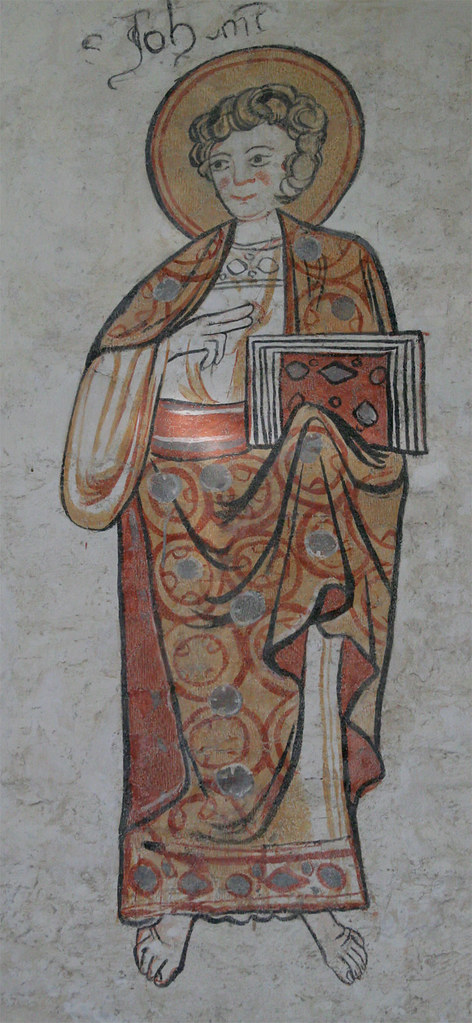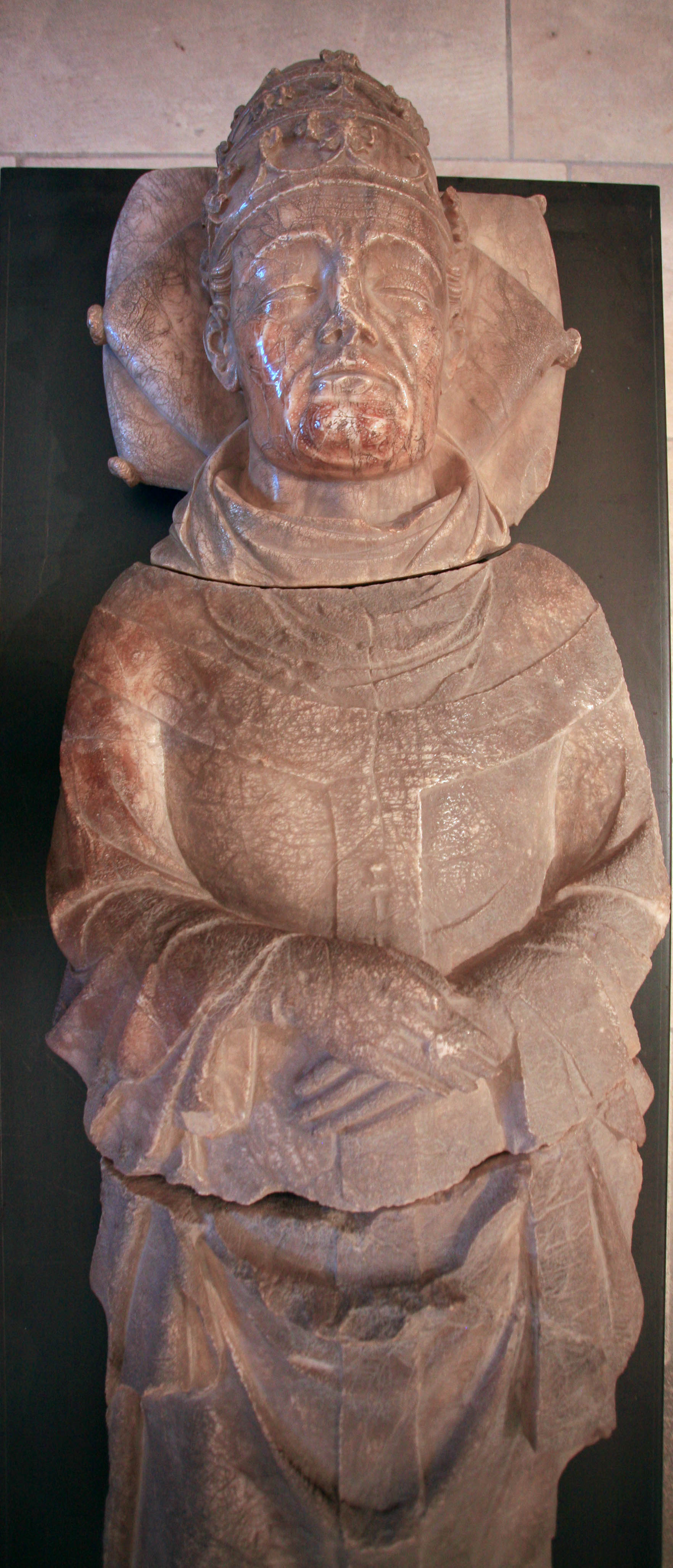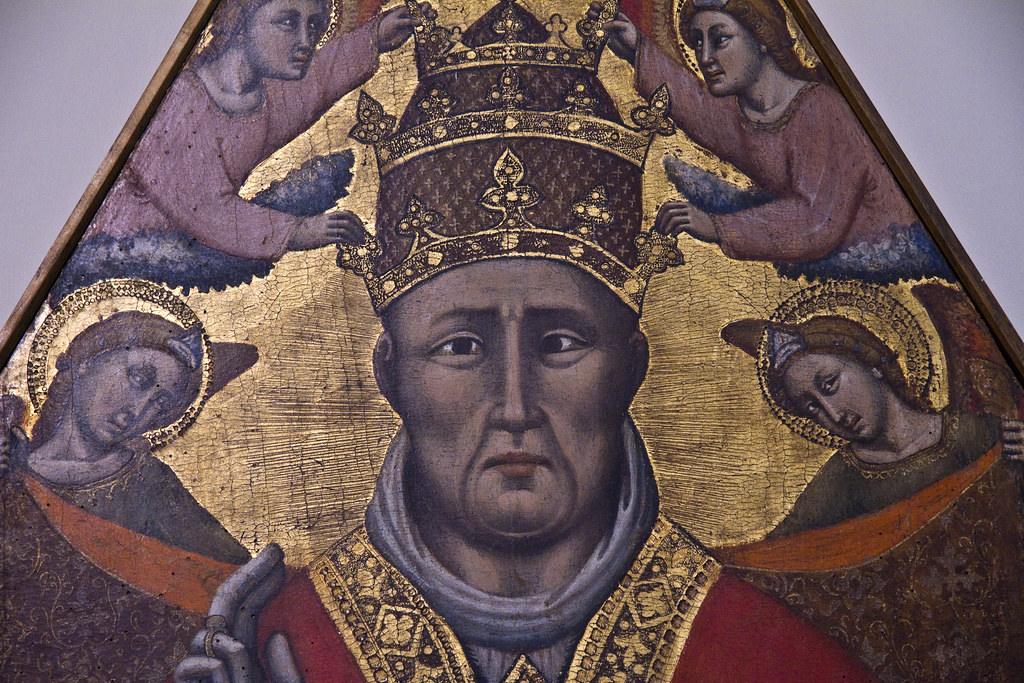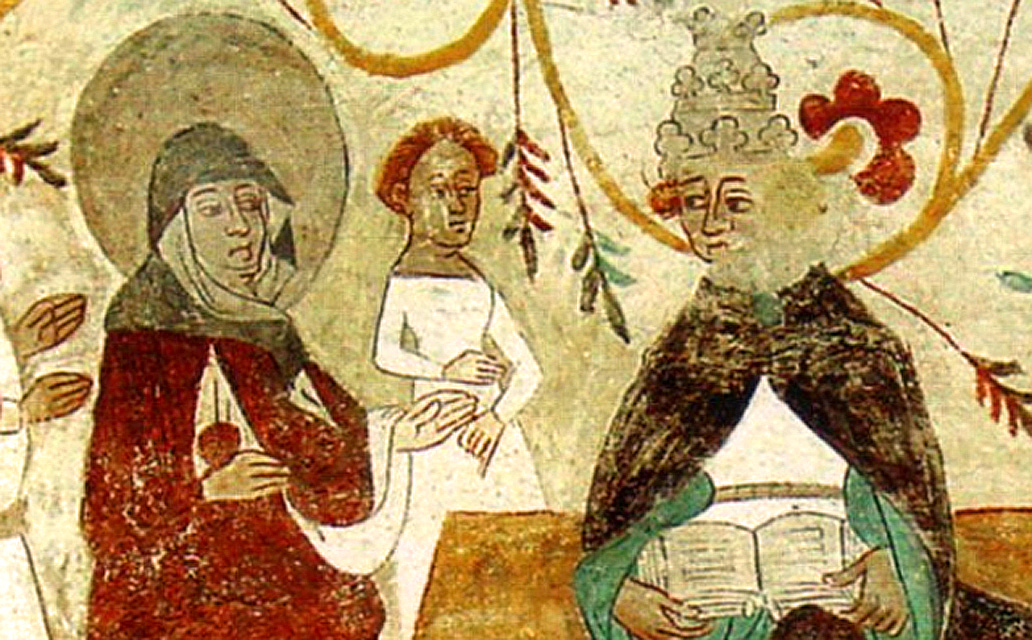Stephanie A. Mann has a post on her blog Supremacy and Survival today about Bl.William Howard who suffered martyrdom on this day in 1680. This was a consequence of the fabricated hysteria of the Popish Plot. Her post seen at The Popish Plot and The Howard Family
Tuesday, 29 December 2015
Bl. William Howard
Stephanie A. Mann has a post on her blog Supremacy and Survival today about Bl.William Howard who suffered martyrdom on this day in 1680. This was a consequence of the fabricated hysteria of the Popish Plot. Her post seen at The Popish Plot and The Howard Family
St Thomas Becket and King Henry VIII
Today is the feast of the martyrdom of St Thomas of Canterbury.
A recent post by Stephanie A. Mann at Supremacy and Survival: The English Reformation
dealt with the fact that it was the destruction of the shrine of St Thomas that was the last straw for Pope Paul III and led to the publication of the excommunication of King Henry VIII. It can be viewed at St. Thomas a Becket and the Long Delayed Excommunication of Henry VIII
There is a useful account by J.C.Wall from his Shrines of British Saints, published in 1905, of the shrine and its decoration, with contemporary illustrations and descriptions as well as an account of the Translation of the relics in 1220 which can be accessed at http://www.historyfish.net/shrines/cw_shrines_four4.html#thomas
The Shrine of St. Thomas of Canterbury.
Cottonian MS., Tib. E. viii. f. 269.
Stephanie Mann has posted today about the events of December 29th 1170 and contemporary reactions to St Thomas in The Murder in the Cathedral
Monday, 28 December 2015
Sign up to save Cecil
Following on from the campaign to remove it a friend has forwarded to me the following link to a petition in support of retaining the statue of Cecil Rhodes on the High Street facade of Oriel. I have signed it and urge others to do so.
We do not want to become ( any more than we are already ) the sort of society that seeks to destroy its past by obliterating public statues and images. Should I start complaining about the "Martyr's Memorial" in Oxford and demand its removal because as a Catholic I feel oppressed or reminded of past oppression every time I walk past it by the figures of Cranmer, Latimer and Ridley?
The petition, with background information, can be accessed at https://www.change.org/p/oriel-college-oriel-college-oxford-university-do-not-remove-the-statue-of-cecil-rhodes?recruiter=449659694&utm_source=share_petition&utm_medium=copylink

Image:www.change.org
Fr Alexander Lucie-Smith has written in The Catholic Herald about the campaign to remove the Rhodes statue in http://www.catholicherald.co.uk/commentandblogs/2015/12/29/rhodes-must-stay-destroying-the-past-is-a-mark-of-tyranny/
Mary Beard was recently quoted in The Daily Telegraph expressing her criticism of the anti-Rhodes campaign and Harry Mount also had an article in The Daily Telegraph commenting on the story, which can be viewed at http://www.telegraph.co.uk/education/educationopinion/12073349/Its-time-to-say-No-to-our-pampered-student-emperors.html
Sunday, 27 December 2015
St John the Evangelist in art
Here are a selection of some western high and late medieval images of St John the Evangelist linked to by John Dillon in a post for today's feast on the Medieval Religion discussion group.
From the late twelfth-century portal (between 1180 and 1190; restored between 1988 and 1995) of the église primatiale Saint-Trophime in Arles
The series of panels early thirteenth-century Life of St. John the Evangelist window (bay 22; c. 1215) in the cathédrale Saint-Étienne in Bourges can be viewed at http://www.medievalart.org.uk/bourges/22_pages/Bourges_Bay_22_key.htm
St John portrayed in a statuette (second from left, starting with the BVM around the corner) in the earlier thirteenth century Mary Shrine (consecrated, 1239) in the cathedral treasury in Aachen

St John as depicted in a later thirteenth-century wall painting in the Reformed Church, Csaroda (Szabolcs-Szatmár-Bereg), Hungary
A detail of the painting:
St John portrayed in a silver gilt statuette on the later thirteenth-century copper gilt châsse of St. Remaclus (completed between 1263 and 1268) in the église Saint-Sébastien in Stavelot
A fourteenth-century wall painting in All Saints Church, Weston Longville (Norfolk)
Only the upper part of this painting of St. John the Evangelist is now left on the south side beside the chancel arch at Weston Longville. In the corresponding position at the north side is John the Baptist, who is very faint now.
The painting has been restored, but St. John was probably always an impressive figure. He is shown here holding the most interesting of his attributes, a poisoned cup or chalice. According to his legend, John was ordered to drink from the cup as a test of his faith by the High Priest of Diana at Ephesus. Two condemned prisoners had already done so and died. John drank and survived unharmed, further demonstrating his power by restoring the two poisoned men to life. More often than not in painted versions of the story, a serpent or small dragon is shown emerging from the cup, to make the meaning intelligible. Here indeed is a small dragon, apparently uttering a cry of despair or frustration, although it has to be said that it looks more endearing than malevolent. Some of that may be due to restoration, but the creature does not look anything like so sinister as many others I have seen, particularly in paintings of St. John on East Anglian screens. A change in sensibilities since the Middle Ages is probably also operating - the whole painting has an slight but inescapable cartoonish air. [Extract from the website below]

A fourteenth-century panel from a glass window from the château of Rouen now in the Musée National du Moyen Age (Musée de Cluny) in Paris
:

St John on Patmos by Giotto di Bondone in an earlier fourteenth-century fresco in the Peruzzi chapel of the basilica di Santa Croce in Florence
Giotto di Bondone in an earlier fourteenth-century panel painting (between 1320 and 1325) in the Musée Jacquemart-André in Paris
St John depicted by Simone Martini in a panel painting from between 1330 and 1339 in the Barber Institute of Fine Arts in Birmingham
St John drinking from the poisoned cup
St John being taken up to Heaven
St John in a later fourteenth-century vault fresco in the baptistery of Parma:
Marble statue of St John by Donatello of 1410-1411 in the Museo dell'Opera del Duomo in Florence

St John on Patmos in the earlier fifteenth-century Très Riches Heures du Duc de Berry between 1412 and 1416: Chantilly, Musée Condé, ms. 65
St John depicted by Jan van Eyck in a panel of his Ghent Altarpiece of 1432 in the cathedral of Saint-Bavon / Sint Baaf in Gand / Ghent
St John by Andrea del Castagno in his vault fresco of 1442 in the cappella di San Tarasio in Venice's chiesa di San Zaccaria

St John on the right, and on the left his brother St. James the Great, by Miguel Ximénez and workshop in a panel of his and Martín Bernad's late fifteenth-century altarpiece of the Holy Cross completed in,1487 for the parish church of Blesa (Teruel) and now, after dismemberment, mostly in the Museo de Zaragoza

St John portrayed by Tilman Riemenschneider in a limewood statue of 1490-1492 from the predella of the high altar of the St. Magdalenenkirche in Münnerstadt) and now in the Bode-Museum in Berlin
A close-up:Saturday, 26 December 2015
St Stephen's martyrdom
Here are two of the images posted by John Dillon on the Medieval Religion discussion group of St Stephen's martyrdom to mark his feast day today:
Bernardo Daddi fresco of 1324 in Florence's basilica di Santa Croce
Beato Angelico fresco cycle of circa 1448 in the Vatican's Cappella Niccolina
By clicking on the links you can view larger images of the paintings.
Friday, 25 December 2015
And the Government shall be upon his shoulder
The Nativity
Martin Schongauer c.1480
Gemäldegalerie Berlin
Image: artbible.info
A happy blessed and joyful Christmas to all my readers
Tuesday, 22 December 2015
King James VIII lands at Peterhead
Three hundred years ago, on December 22nd 1715, there arrived at Peterhead in Scotland, with the hope of leading an army to his successful installation on the throne, the Stuart claimant King James III and VIII.
The Jacobite King James III and VIII
A portrait of c. 1717
Image:historicalportraits.com

An eighteenth century engraving of the landing at Peterhead
Image: Wikipedia
Originally the plan had been to land at Montrose, but the ship sailed north a avoid a vessel there and when the claimant arrived at Peterhead there were no troops to meet him. Unlike the engraving reproduced above James was so ill with seasickness that the ship's captain had to carry him ashore.
By the time he arrived the critical moment in the chances for the success of the rising had already passed, and the coronation as King of Scots on January 23rd at Scone never took place, and in February 1716 he was advised to return to the continent so as to safeguard his person.
On a seasonable Jacobite link it is often said that "O Come, All ye Faithful" originated as a Jacobite anthem. The origins of the hymn and its Jacobite associations are discussed in the online account at
By the time he arrived the critical moment in the chances for the success of the rising had already passed, and the coronation as King of Scots on January 23rd at Scone never took place, and in February 1716 he was advised to return to the continent so as to safeguard his person.
On a seasonable Jacobite link it is often said that "O Come, All ye Faithful" originated as a Jacobite anthem. The origins of the hymn and its Jacobite associations are discussed in the online account at
O Come, All ye Faithful
Saturday, 19 December 2015
Bl.Pope Urban V
December 19th is the feast day of Bl. Urban V, who was Pope from 1362 until his death on this day in 1370. John Dillon has once again posted about him on the Medieval Religion discussion group.
The nobly born Guillaume de Grimoard was a well educated Benedictine who made his profession at Saint-Victor in Marseille and who became abbot first of Saint-Germain at Auxerre and later of Saint-Victor. Though not a cardinal, he had been a Papal legate in Italy several times in the decade before his election to the Papacy in 1362. Taking the name Urban, he cut the rate of tithes in half, supported students through bursaries and the foundation of colleges, and sponsored many building projects, especially in his native Lozère, where he funded continued work on the recently begun but already fire-damaged cathedral of Mende, and in Rome. Many of the latter's churches were in great disrepair and the basilica of St. John in the Lateran had to be largely rebuilt after succumbing to a fire in 1360.
In 1367 he fulfilled a previously announced intention by changing his residence from Avignon to Rome. On 1 March 1368 Urban's preparations to say Mass in the Papal chapel (the Sancta Sanctorum) of the Lateran basilica led to the discovery there of the putative heads (cranial fragments) of Sts. Peter and Paul, which latter he then had placed in new reliquaries; on 15 April 1370 these were enshrined in a newly built ciborium over the basilica's high altar. Urban commemorated this happy event, so thematically significant for his renewal of the Roman Papacy, on at least one of his seals; reference to it would become standard in his Italian iconography.
The move to Rome was motivated in part by a desire on Urban's part to effect a reunion with the Greek church and by his perception that Rome, rather than Avignon, was a better stage from which to promote the crusade against the Turks that he had proclaimed in 1363. The latter was not a success, while the Greek policy resulted in the personal conversion, in Rome, of the Emperor John V but not in any greater Eastern adherence to Latin Christianity. Moreover, outbreaks of plague and violence in the city and armed struggles with condottieri elsewhere in Italy gradually soured Urban on the idea of ruling from Rome. Disappointing many Italians and also St. Birgitta of Sweden, he returned to Avignon in early September of 1370. Urban died on December 19th of the same year. He was buried in Avignon; two years later his remains were moved to the abbey church of Saint-Victor in Marseille.
His cult was immediate and initially widespread. The Kings of France and Denmark promoted Urban's cause and a canonization inquest recorded in 1382 produced a number of miracles. Ultimately, though, his candidacy became an unfulfilled project of the Avignon papacy, stalling out in the conflicts of the Great Schism. Pius IX beatified him in 1870.
A few visuals from Urban V's pontificate:
A Papal bulla bearing the images of St. Peter (at right) and St. Paul (at left):
http://tinyurl.com/yendt2x
A bolognino (coin of the Papal state) issued by Urban V:
http://tinyurl.com/4mff7x
A gold florin issued by Urban V:
http://tinyurl.com/53jd6h
The ciborium in St. John Lateran, sculpted by Giovanni di Stefano and erected in 1370:
http://flickr.com/photos/annoysius/2937878704/sizes/l/
http://flickr.com/photos/annoysius/2937030761/sizes/l/
Giovanni di Bartolo's reliquaries (1370) of Sts. Peter and Paul in the ciborium:
https://www.flickr.com/photos/brunello2412/5885876874/
Some period-pertinent images of Bl. Urban V:
a) as depicted (twice) on the engraved arms of a later fourteenth-century reliquary cross of Bohemian manufacture (c. 1370) in the treasury of the cathedral of St. Vitus in Prague:
http://www.e-codices.unifr.ch/de/vad/0342/13
c) as portrayed in his later fourteenth-century gisant (early 1370s) in the Musée du Petit Palais in Avignon:

d) as depicted (holding bust-length portraits of Sts. Peter and Paul) by Simone dei Crocifissi (Simone de Filippo) in a later fourteenth-century panel painting (c. 1375) in the Pinacoteca nazionale in Bologna:

Mis-en-page:
http://tinyurl.com/28n7awl
g) as depicted (holding a paten bearing miniature busts of St. Peter and St. Paul) in a remounted late fourteenth-century fresco in the chiesa di Santa Maria della Croce (a.k.a. chiesa di Casaranello) at Casarano (LE) in Apulia:
http://gallica.bnf.fr/ark:/12148/btv1b6000795k/f494.item.zoom
i) as depicted (with two cardinals; going by ship from Rome to Avignon) in a late fourteenth-century copy of Bernard Guidonis' Fleurs des chroniques (after 1384; Besançon, Bibliothèques municipales, ms. 677, fol. 102v):
j) as depicted (holding a tablet with bust-length portraits of Sts. Peter and Paul) in a probably late fourteenth-century fresco in the chiesa di San Francesco in Terni:

k) as depicted (holding a diptych with bust-length portraits of Sts. Peter and Paul) in a badly degraded probably late fourteenth-century fresco in the chiesa di Sant'Eligio Maggiore in Naples:

Detail view of the diptych of SS Peter and Paul:
http://farm6.static.flickr.com/5506/14455126726_906d5fbbdd.jpg
l) as depicted (holding a chalice containing miniature heads of Sts. Peter and Paul) in the late fourteenth- or early fifteenth-century frescoes of the rupestrian chiesa / cripta di Santa Croce ai Lagnoni in Andria (BT) in Apulia:
m) as depicted in an earlier fifteenth-century copy from Köln of the Vaticinia de summis pontificibus (c. 1401-1425; Paris, BnF, ms. Latin 10834, fol. 5v):
n) as depicted (holding a book surmounted by miniature busts of St. Peter and St. Paul) in an early fifteenth-century panel painting (c. 1410), seemingly of Italian origin, in the chapelle Saint-Privat in Mende's cathédrale Notre-Dame-et-Saint-Privat:

o) as depicted in an earlier fifteenth-century copy from northern Italy of the Vaticinia de summis pontificibus (c. 1410-1415; Kremsmünster, Stiftsbibliothek, Hs. CC Cim. 6, fol. 7r):
p) as depicted in an earlier fifteenth-century copy from Florence of the Vaticinia de summis pontificibus (c. 1426-1450; London, BL, MS Harley 1340, fol. 7r):
http://www.bl.uk/catalogues/illuminatedmanuscripts/ILLUMINBig.ASP?size=big&IllID=51685
q) as depicted in an earlier fifteenth-century copy from Umbria of the Vaticinia de summis pontificibus (before 1431; Paris, BnF, ms. Nouvelle acquisition latine 2130, fol. 8r):
r) as depicted (at right; at left, St. Birgitta of Sweden) by Johannes Rosenrod in an earlier fifteenth-century fresco (1437) in Tensta kyrka, Tensta (Uppsala län):

Rorate Mass at the Oxford Oratory
I did not manage to attend the Rorate Mass at the Oxford Oratory this morning. In recent years this has become a very popular feature of keeping Advent here. However here are two pictures from the Oratory website of the Mass, which was sung at seven o'clock this morning:
Images: Oxford Oratory website
Friday, 18 December 2015
Prince appeals for help for Middle East Christians
I am posting a mailing I received from that excellent charity Aid to the Church in Need:
HRH The Prince of Wales delivered an impassioned appeal on behalf of persecuted Christians in the Middle East, saying that the growing crisis of extremism “threatens the very existence of Christianity in the land of its birth”.
ACN attended a special Advent reception yesterday (17th December) at Archbishop’s House, Westminster, where the Prince called for more “practical” help for persecuted Christians and went on to praise ACN as “a remarkable organisation”.
Quoting from ACN’s ‘Persecuted and Forgotten? report, Prince Charles said: “Christianity is on course to disappear from Iraq within five years, unless emergency help is provided on a greatly increased scale.”
You can listen to Prince Charles' full speech.
In his speech, Cardinal Nichols also underlined that Christians were among many oppressed faith groups in the Middle East.
The Cardinal also said: “To remain silent about this specific persecution is to neglect and weaken the awareness and role of this faith here.”
ACN is responding further to the plight and suffering of Christians by supporting 19 new relief programmes in Syria and 11 new programmes in Iraq.
The relief programmes provide vital aid including food, medicine, shelter and pastoral support for Christians across the region – including for families fleeing Daesh (IS), escaping persecution.
With your continued support and prayers ACN supports over 140 projects in Iraq and Syria – Thank you!
